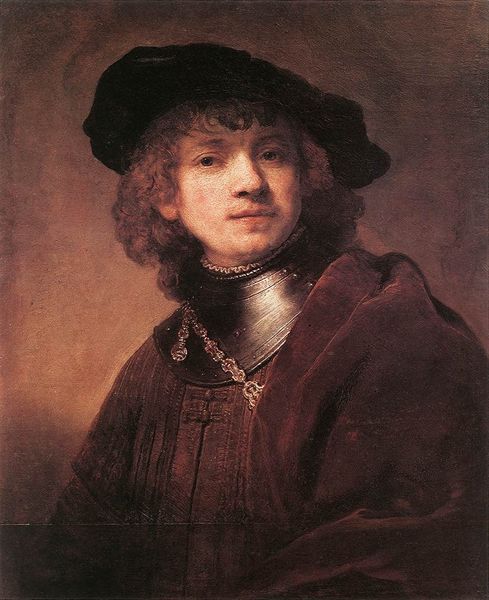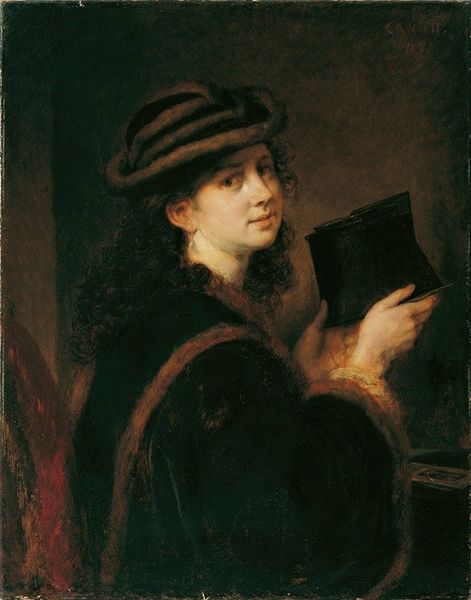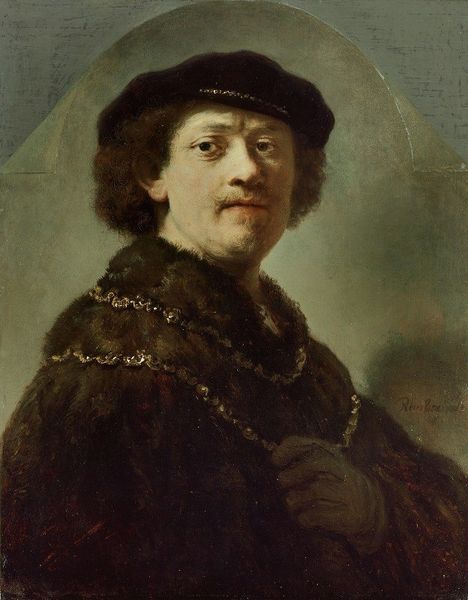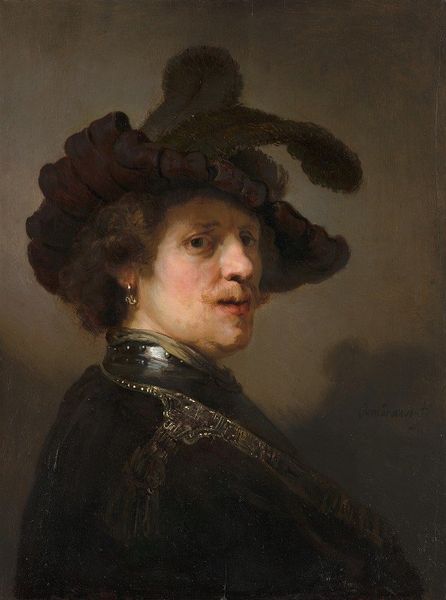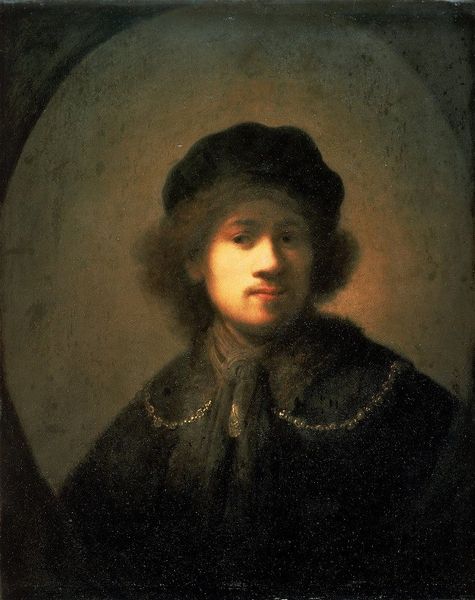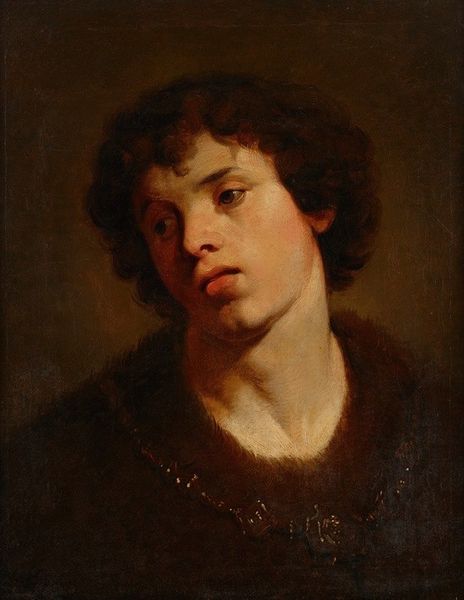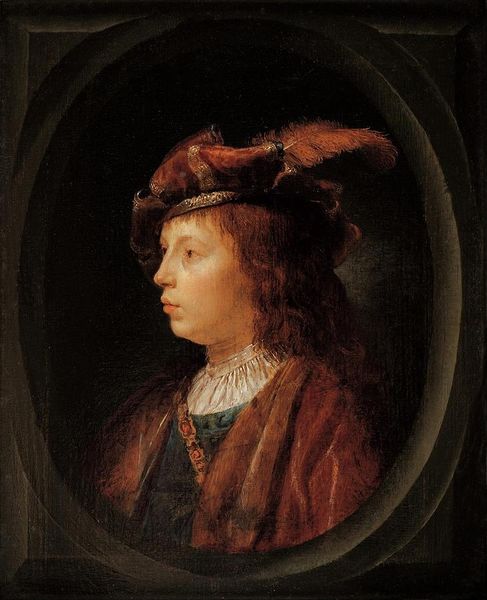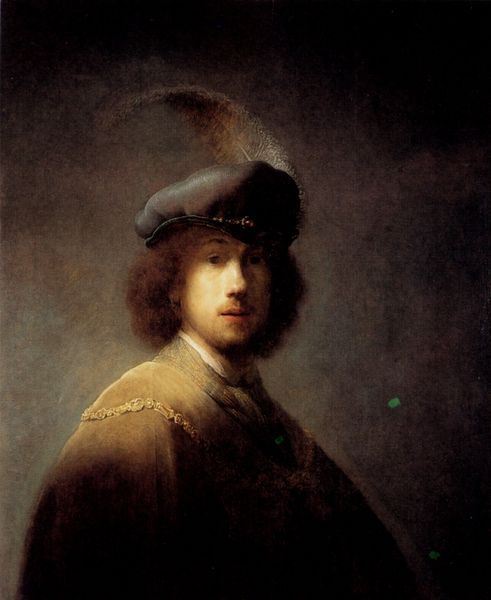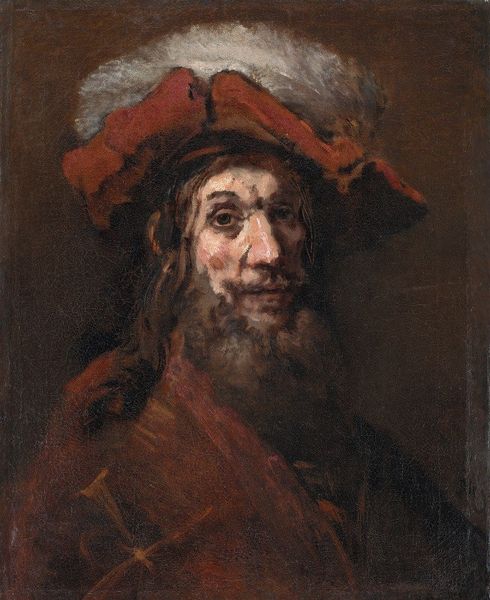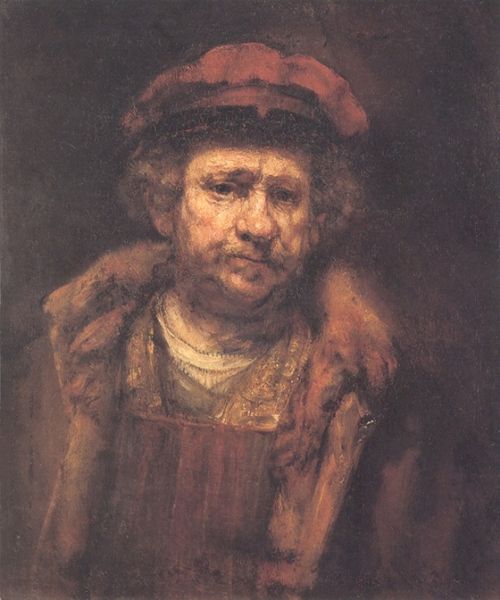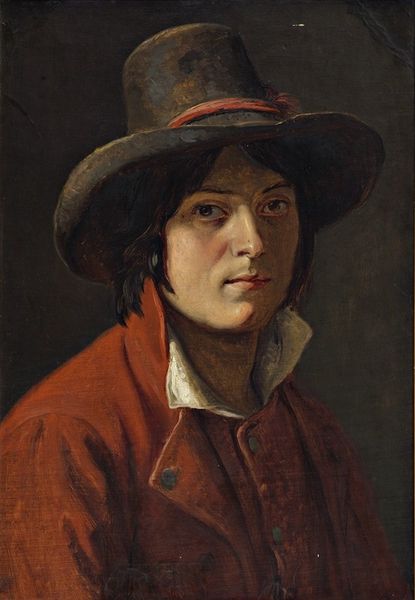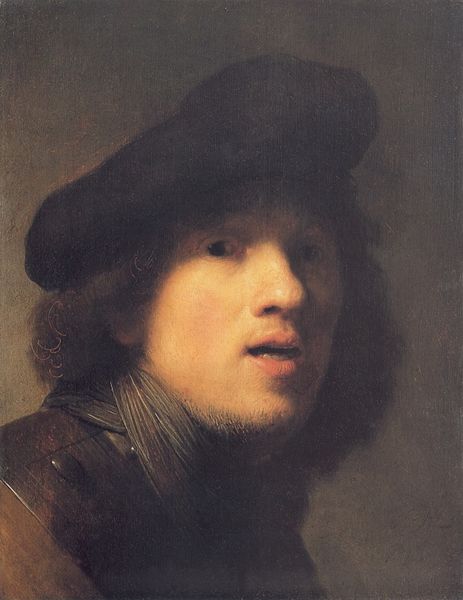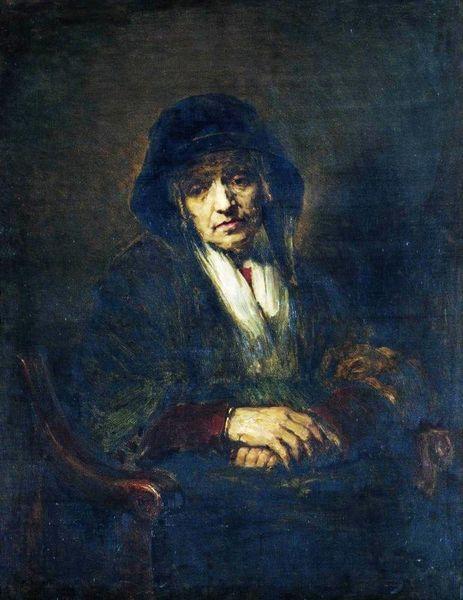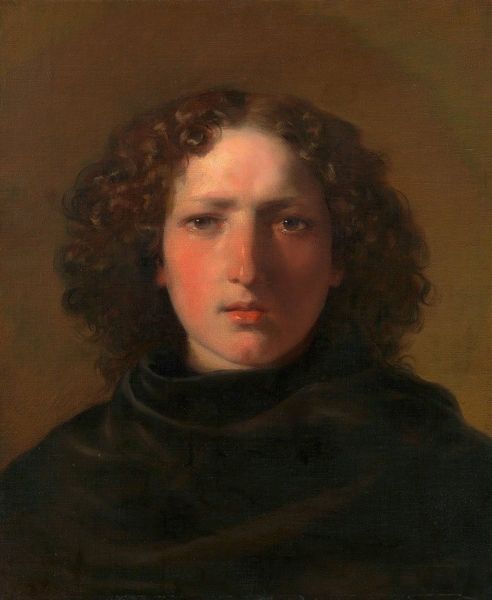
painting, oil-paint
#
portrait
#
self-portrait
#
baroque
#
dutch-golden-age
#
painting
#
oil-paint
Copyright: Public Domain: Artvee
Editor: Here we have Rembrandt van Rijn's "Titus, the Artist’s Son," painted around 1657, in oil. I'm struck by how Rembrandt’s impasto seems to almost sculpt Titus’s face out of light. How do you interpret this piece? Curator: Let’s think about the context. This painting exists not in a vacuum but emerges from specific material conditions. Rembrandt's access to pigments, his studio assistants who ground them, the canvases woven from linen, and even the social standing that allowed for portraiture—all are vital components of its creation. It represents artistic labor and commodification in 17th-century Netherlands. Editor: That's an interesting way to put it. I guess I was mostly seeing it as a tender portrait of a father and son. Curator: Well, consider also that this tender portrait is crafted through very deliberate applications of material. Notice the textures; think about the relative cost of the pigments that created them, how those pigments were acquired. Consider also that the material conditions of painting such as this dictate how people were able to perceive images at this time. Are you still looking at the "father and son" in the same way? Editor: Not exactly, no. I guess it highlights the economic and social systems in play. All those materials and labor contributing to the creation, as opposed to just pure artistic genius. It reframes the picture somehow! Curator: Exactly. Art is a product of human hands and the economic structures that enable their work. It is deeply rooted in materiality. It is what we can consider when seeing works of art such as these, today. Editor: I’ll certainly think more about the material origins behind the art that I love now.
Comments
No comments
Be the first to comment and join the conversation on the ultimate creative platform.
